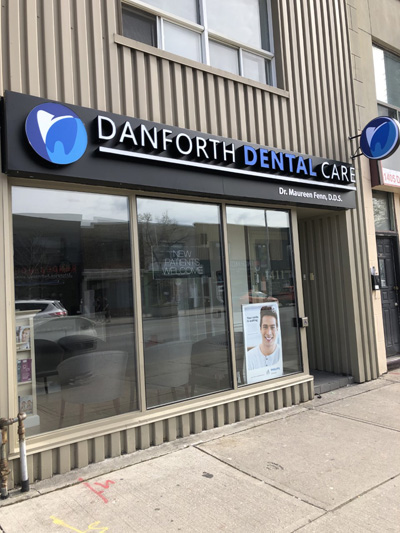Comparing the Differences Between Composite and Porcelain Veneers
Which material is best for your stunning smile transformation?
Many people suffer from a lack of confidence in the appearance of their smile - but the great news is, cosmetic dental procedures such as porcelain or composite veneers are capable of transforming teeth into picture-perfect, head-turning smiles.
For the purpose of this article, our Danforth dentist is going to break down the differences between both porcelain veneers and composite veneers (otherwise referred to as composite bonding), so you can get a better idea about which option would be best for your smile transformation.
First things first: What exactly are dental veneers?
Veneers are the premiere choice of cosmetic dentistry treatment if your goal is to completely upgrade and enhance your smile’s appearance. Veneers have the ability to address multiple cosmetic concerns all at once - including discoloration or staining, cracks and chips, jagged edges, size and shape irregularities, and spacing or gapping in between teeth.
Now, let’s go on to explore the unique benefits of each material used in this popular procedure, so you can gain a better understanding of which type of veneer would be best for you:
Porcelain Veneers
Porcelain veneers are essentially wafer-thin shells composed of porcelain material, that are custom-created to adhere to the front surfaces of a patient’s natural teeth to conceal imperfections and create a stunning result.
The process: The process of a porcelain veneers treatment will take place over a couple of separate visits. The procedure involves the dentist first removing a very thin layer of natural surface enamel from the teeth (around ½ millimeter) in order to prepare them for the veneer fittings. After this, the dentist will take impressions of the teeth to be sent off to a dental laboratory for production.
Generally speaking, custom-made veneers should be ready within 1-2 weeks. Veneers require that the teeth be prepared through cleaning and polishing, as well as through the process of etching which will roughen the surfaces to allow for a strong and permanent bond. With that being said, temporary veneers will be provided to be worn in the meantime to protect the underlying tooth structure.
When the veneers return from the lab and are ready for their official placement, the dentist will adjust and trim them for an appropriate fit. A unique cement material will used to attach each veneers to each tooth, and will be hardened with a high-intensity blue light.
Benefits over composite veneers: The benefits of choosing porcelain veneers over composite veneers include the fact that they are generally more long-lasting and durable, and will virtually not stain or discolor due to the fact that they are non-porous.
As a procedure popular among Hollywood’s stars and supermodels, veneers also offer a very natural-looking, yet simultaneously perfect aesthetic result - which is why it is considered the gold standard of material for cosmetic dental veneers.
Composite Veneers (Composite Bonding)
Composite veneers or bonding involves the use of composite resin material - which is the same material used for tooth-coloured cavity fillings. The material is soft, therefore moldable and shapeable, before becoming hardened for a permanent result.
The process: The process of composite veneers is much more simple than that of porcelain veneers, as the treatment can be completed in just a single visit to the dentist. To begin, the dentist will determine the appropriate shade of composite resin to use that will perfectly blend with the rest of the natural smile. Next, the dentist will etch or roughen the surface enamel where the resin material will be applied, followed by applying a unique liquid agent to ensure a strong bond.
Finally, the composite resin is applied to each prepared tooth receiving treatment, and is then shaped or molded accordingly to provide a beautiful result. The material is then hardened via ultraviolet light.
While composite veneers do not generally last as long as porcelain veneers, they do offer some unique benefits.
Benefits over porcelain veneers: The benefits of choosing composite veneers, or composite bonding over porcelain veneers include the fact that they are much more affordable, and the overall process is much quicker.
Ready to improve your smile with dental veneers?
Our Danforth dentist would be thrilled to help you achieve the smile of your dreams!
Schedule your veneers consultation with Dr. Maureen Fenn today to learn more about whether porcelain veneers or composite veneers/dental bonding would make a better choice for your smile, and to learn if you’re a good candidate for either procedure to begin with.
In some cases, a simple teeth whitening procedure may be all that’s needed to enhance your smile and help you re-claim confidence.
We look forward to hearing from you!


We are conveniently located near Greektown on the TTC Danforth Avenue subway line between Greenwood Avenue and Coxwell Avenue.
1411 Danforth Avenue, Toronto, ON M4J 1N2